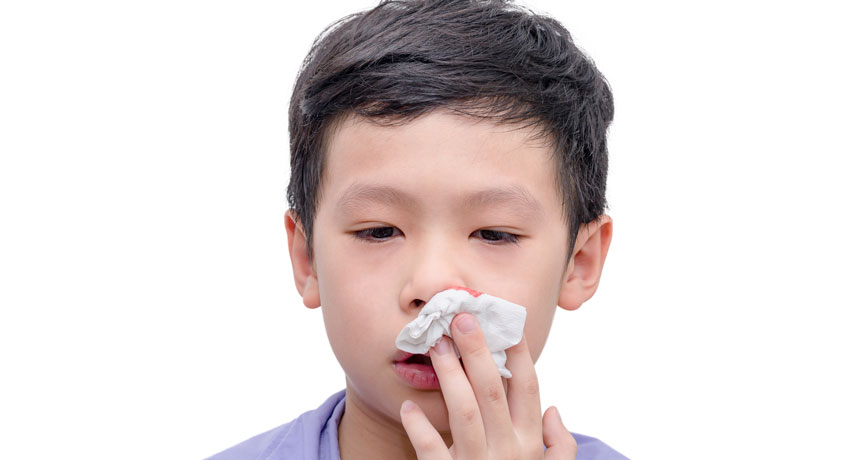Don’t put greasy Q-tips up your kid’s nose, and other nosebleed advice

To stave off bloody noses, keep noses moisturized and free of fingers.
all_about_people/shutterstock
- More than 2 years ago
Ever since she was a baby, my older daughter has periodically endured massive nosebleeds. When she was 10 months old, I walked into her room to pick her up after her nap. There, I was greeted with a baby happily standing in what appeared to be a sea of ruby red blood. Her busy little hands had smeared blood all over the crib and wall. The sight haunts me still.
My daughter’s very calm pediatrician told us that although nosebleeds can be alarming, they’re usually nothing to worry about. Stained sheets aside, that’s been our experience over the last four years. In the service of sharing what we have learned, here is a nosebleed primer that might help you to stanch the flow of a nosebleed and prevent them in the future.
Anatomy of a nosebleed
Nosebleeds, also called epistaxis, are quite common among children, says pediatric otolaryngologist Anna Messner of Stanford University Medical Center. Most nosebleeds are harmless, but in rare cases, they can signal more serious problems.
The nose has lots of blood, and breaks in those vessels, particularly the vessels in the bottom part of the nasal septum, are what cause the gushers. “Digital trauma,” also known as “digging in your nose,” is a main cause of nosebleeds in children. Keep those little nails trimmed.
The same nosebleed can persist in spurts over several bloody days. Incomplete healing of these vessels can cause a recurring series of bleeds that strike in quick succession before ultimately tapering off.
Do these things
Bloody noses are worse in the winter, when the indoor air is dry. Saline spray and humidifiers (regularly cleaned) are great ways to keep delicate nose tissue hydrated and healthy, conditions that might curb nosebleeds.
In the midst of a bleed, most parents pinch in the wrong spot, Messner says. People will often pinch high up on the child’s nose, near the eyes. That high hold won’t do anything but annoy your child. Instead, pinch down by the bottom, completely blocking off the nasal passages. If you pinch in such a way that your child is forced to breathe through the mouth, you’re doing it right. “It’s just regular old first aid,” Messner says. “If you have bleeding, you want to put pressure on the area that’s bleeding.” Hold the pinch for a few minutes, then slowly release.
Keep your child’s head upright. You don’t need to lean your child forward, nor should you tilt the head back. That can send blood into the throat, and choking or gagging may ensue. What’s more, blood can irritate touchy stomachs, potentially elevating a simple nosebleed situation to a nosebleed-vomit combo. You don’t want that.
Don’t do these things
Things to avoid include my family’s nosebleed prevention trick — twice-daily Vaseline smeared on the inside of the nose with a cotton swab. The Vaseline cure has not stood up to peer review, I am sad to report. What’s more, Messner points out that a cotton swab up the nose could itself damage blood vessels. Fine.
Despite what your child’s sweet preschool teacher says, cold packs on the neck won’t slow the bleeding. “It won’t hurt anything, but it definitely won’t help,” Messner says.
With luck, your child’s gusher days will soon be over. Chances are good that they will either outgrow the nosebleeds or, at the very least, get better at picking their nose.







